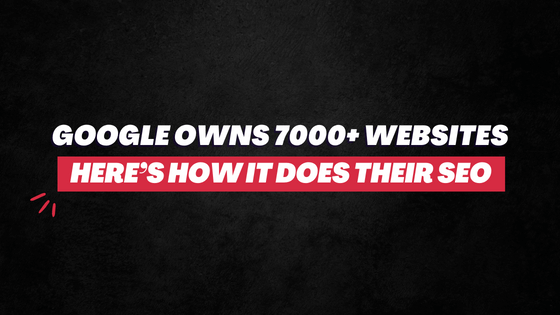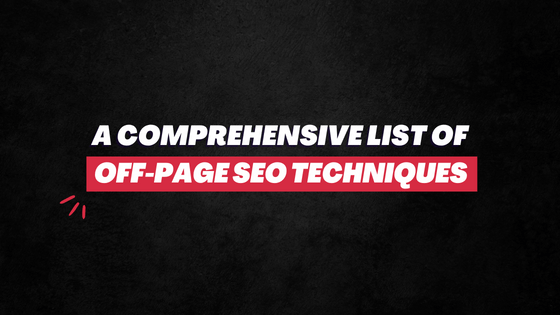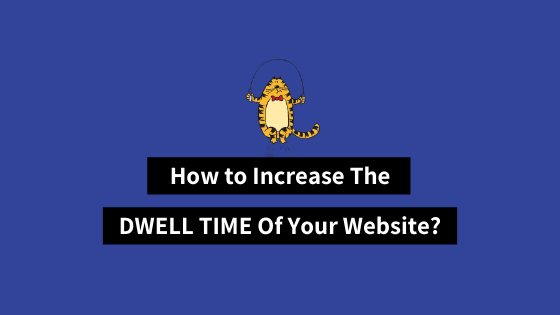
Scrap all the SEO factors. And make a note of this very important thing:
Search Engines now “obsess” giving users GOOD EXPERIENCE.
They want people to get exactly what they are looking for – and that, in the most time-efficient way. (Hence, the rich snippets!)
Now, to make this happen, the likes of Google and Bing aren’t entirely focusing on the outlined 200+ ranking factors. Nah. They are going beyond.
Today, they are scratching beneath the surface to look at the UX Signals — signals that suggest that the end-user is satisfied and enjoying the experience.
This is the reason why many websites who lag on the technical SEO-ends like Schema Markup, crawl errors, sitemaps and more, they sometimes rank above than those that trade much better in these departments. Because these websites offer a better experience to the users over those who solely focus on optimizing for search engines.
And this is exactly why I believe…
User Experience Optimization (UXO) is the new SEO.
UX Signals
There are a handful of signals that directly correlate with users’ experience.
- Click-Through Rate (CTR)
- Bounce rate
- Time spent on page
- Session duration
- Pogo sticking
- Dwell time
To stick to our topic, we’ll talk about dwell time.
Recommended Reads:
- 19 Practical Steps to Reduce Your Bounce Rate
- 9 Actionable Tips to Increase Your Organic CTR on SERP
If you know the basics, scroll and jump to the main part on how to increase dwell time on the website…
What is Dwell Time in SEO (And the Confusion around It)
Dwell time, time spent on page and session duration are often confused with each other, used interchangeably.
In reality, their definitions vary.
Time spent on page, as the name suggests, is the total amount of time you spend on a page before going to another page (which could be ANYWHERE). Here’s its mathematical representation:

Session duration is the total amount of time that you spend on a website. It’s a cumulative or sum of all your “time spent on page”.

Dwell time is the total amount of time that passes between when a user clicks on a result, consumes the content and then returns back to the search result page.
Note, dwell time is like a cycle: the user visits your website from the SERP, and then MUST return back to the SERP.
This cycle doesn’t get measured in any metric on Google Analytics unlike time on page and session duration – both of which you can find out about on GA.
However, you can still measure dwell time by tracking the user’s engagement and various other parameters.
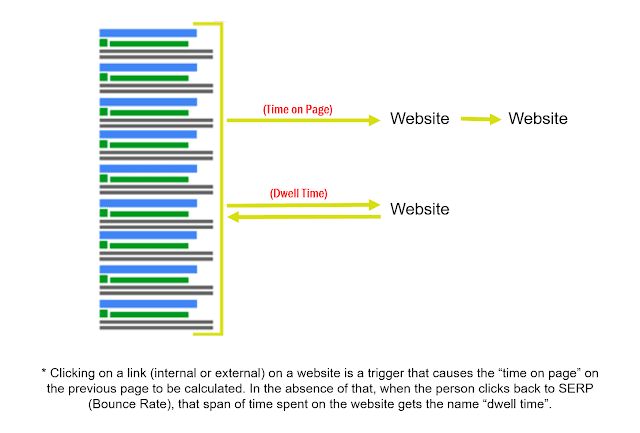
How Search Engines Interpret Dwell Time?
Google and Bing care a lot about dwell time. Because it is one of the few signals that directly highlights users’ experience. And both the search engines want only those results at the top that delivers good UX.
BUT there’s a different mechanism when it comes to how search engines interpret dwell time.
It’s not very straightforward.
They DO NOT simply demote a website if it trades poorly in dwell time. There are various other SEO factors-cum-UX-signals, after all, which they care about equally.
To put it in layman’s terms, dwell time is more about the specific URL and its position — RATHER than the whole website.
When dwell time is low for a specific URL, it signals search engines that the URL isn’t relevant to rank higher on SERP for that particular search query. So, the result/URL gets demoted.
Similarly, if the dwell time is high for a specific query, it signals search engines that the URL is relevant to rank higher on SERP for that particular search query. Hence, its ranking further gets boosted.
“Oh, the dwell time of this result is good. People using this search query must be finding it relevant. So, I should rank it even higher” – that’s basically what a search engine would think.
For example…
When you Google “best food to eat at night”, URL#1 and URL#2 pops-up.
Ceteris paribus, if URL#2 has a higher dwell time, it will eventually overtake URL#1 because, to search engines, it is more relevant for the said search query.
Now, the NOTEWORTHY thing here is that this “effect” “impact” or “change” in result due to dwell time is restricted solely to that particular result/URL in the short run — and NOT necessarily the entire website or domain.
In our above example, URL#1 will be replaced by URL#2.
But this demotion on URL#1’s part won’t hurt its entire website’s position or SEO grade.
It will just affect that particular result URL#1 for that particular or related search query “best food to eat at night”.
URL#1 might still rank higher, if optimized, for other search queries like “best food to eat in the evening”.

The biggest objective of search engines behind using dwell time as a ranking factor is to understand the relevancy of results/URLs with the search query.
If the dwell time is good, that result/URL will get promoted. If it’s bad, it will get demoted.
This whole process concerns only one URL of the websites. It doesn’t affect the SEO-power of the entire website in the short-run.
A person Google’d “diet to cut weight quickly”, sees your article on SERP and clicks on it. He doesn’t like it, so he returns back.
Clearly, the dwell time is low.
This will demote your position on the result page for queries like “diet to cut weight quickly”.
However, your ranking may still stay strong for queries like “exercise to reduce weight quickly”, provided, of course, people searching these workout-oriented phrases are finding your content helpful.
Or in other words, in many ways, dwell time helps search engines match the intent of search queries and your content.
It affects the position of the result/URL, and not necessarily the SEO-standing of the whole website.
BUT THEN AGAIN, if the dwell time of a single domain is constantly low for a wide range of search queries, this will hurt the site-wide SEO. Because it’s a clear indication that the website isn’t of good quality and the domain shouldn’t be ranking so high.
All clear?
Let’s jump to the most important part…
How to Increase Dwell Time On Website?
1. Target the right audience with the content
If wrong people click on your result, they are going to hit ‘back’ soon because the content doesn’t serve them exactly.
This is why, with your content, you must target only the most relevant audience who’s more likely to read and find the copy valuable.
You can do this by optimizing your content with relevant and targeted keywords.
If you’ve written an article on, say, weight loss from a workout point-of-view, use only workout-related keywords—and NOT the diet-related keyword variations.
Because even when your article manages to rank higher for weight-loss diet-centric phrases, the searchers won’t find it very useful.
In short, avoid stuffing inapt keywords just for the sake to rank higher or get more traffic. It may end up doing more harm to you.
Also, you can use the headline and search snippet to make it clearer as to who the article is for.
With our weight loss example above…
You can write a headline like “A Comprehensive Weight Loss Workout Program For Beginners”.
This makes it clear who the article is for — people who are just the beginners and those who want a strict workout program.
These basic measures will eliminate many unwarranted clicks on your result. And it will leave no room open for a poor dwell time in the first place.
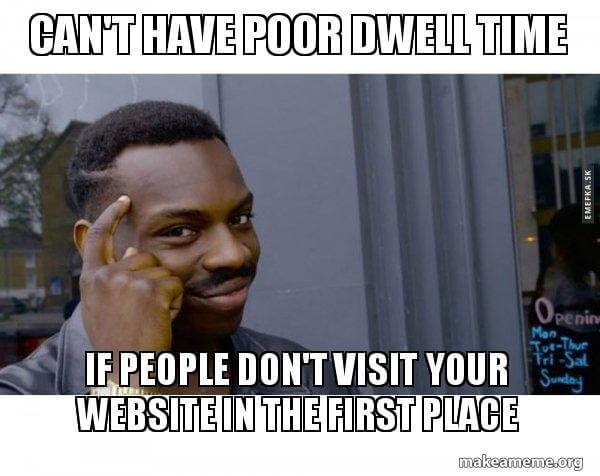
2. Attractive (non-clickbaity) Headlines
Talking about the headlines…
Have you ever come across a headline that promises a lot but the content inside delivers very less?
Of course, you have!
We all have.
The internet is filled with such clickbait results.
And to make this worse, there are countless guides on the web teaching people how to come up with such irresistible, clickbait-y, headlines.
Well, I have it here on Spell Out Marketing too: 9 Blog Headline Best Practices.
When you’re trying to do well on the UX signals, you better steer away from such tactics.
You don’t want to mislead the users to click on your result and find out that the content is irrelevant or sh#t.
Else, your dwell time will be very low. (And, also, your brand will take a big hit.)
So, don’t over-promise in your headlines. Keep it grounded and in sync with the remaining of the internal content. Or, in other words, keep your article just as rich as its title.
3. Ace Your Internal Linking Game
When you’re looking to drive organic traffic, your primary goal isn’t exactly to increase dwell time, is it?
Your goal is to convert that visitor into lead or sales.
And even when you’re focusing on improving the UX signals of your website, you would rather have the visitors lurk around on your own website than hitting the back button to SERP. Meaning, you would rather have higher ‘time spent on page’ because visitors hang around on your website THAN dwell time where they have to go back to the result page.
This is where adding internal links in the article comes to play a critical role.
The website visitors don’t like meeting dead-ends.
They want more options.
They want to be engaged with relevant content.
And if they like what you’re saying/offering, they are going to engage back.
So, to make this happen, you need to include several internal links in your post to other relevant and interesting articles.
For instance, if you have written something on “How to increase footprints in your brick-mortar store”, it’s likely that the reader will also find something like “How to retain your offline customers” equally helpful.
As and when needed, aside from the obvious SEO purpose (passing link juice from one page to another), include internal links throughout the content so that it’s more helpful to the readers to an extent that they decide to browse the website a little bit longer.
4. Embed YouTube Videos

This is the easiest tactic to hook visitors on your website a bit longer.
Yet, it’s baffling how also under-utilized it is.
Just embed a relevant YouTube video in your post. If the visitors decide to watch that video, they would automatically be staying on your page for longer. And just that easily you can increase dwell time.
Now, this YouTube video doesn’t have to be yours…
Just search the most relevant one and embed it.
Since it will also increase the views of that video, the creator wouldn’t mind you using her/his video in your post.
If needed or you want, just give a shout out to that YouTube channel, and that’s about it.
Pro Tip: Avoid embedding videos of your direct competitors.
5. Sprinkle in more graphics
Imagine you enter a page and all you see is texts, crunched line-after-line.
Even when the content is of good quality, it’s very likely that you won’t read it entirely; you would hit “back” immediately.
Because, one, it’s too overwhelming.
Second, since lacking necessary breaks, you would find it hard to maintain your attention.
And third, you know there are much better alternatives available.
Besides, adding visuals to your blog posts enhance their value, which got to help your dwell time in some way.
But aside from this hypothetical, there are many data-proven reasons why adding images and Infographics in the post is beneficial. Like…
- 40 percent of people respond better to visual information than text.
- The Brain process images 60,000 times faster than any other information.
- Website owners can average 90 percent more views if their content includes compelling images.
- The use of visual content in articles published by marketers has increased by 130 percent between 2015 and 2016. (Why do you think?)
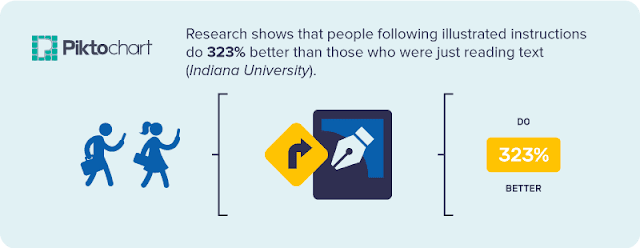
And here’s the most important one…
People will actually spend 10 percent more time looking at visuals on a website than reading the text.
These numbers clearly highlight how using images in articles affect UX positively. Now isn’t that what we’re looking to achieve here?
So, sprinkle more visuals in your blog posts — be it with images, Infographics or custom illustrations.
Recommended Read: How many images to use in a blog post
6. Make the post is longer (only if the topic demands it)
Personally, I am not a big fan of long articles.
Indeed, search engines like long articles. And the average Google first page result contains 1,890 words.
But this general theory has created a perception that one MUST write long-form contents all the time.
It is as if it’s mandatory, irrespective of the niche and the topic of the post, that one MUST write never-ending content.
Of course, this idea has plenty of flaws.
Recommended Read: The Myth of 1,890 Words Long Articles
But in the context of ‘Dwell Time’, it makes sense to avoid bite-size content and aim for long-form content.
However, remember, this must only be done if the topic demands it.
There’s nothing worse than blabbering over on, say, “what is the zip code of California” for 1,000+ words when, in fact, you can sum up the information in a small paragraph.
Consider the intent of the visitors.
Are they looking for the “what’s” and “when’s” or “how’s” and “why’s”?
Are they looking for quick answers for the topic that you’re covering or would they want in-depth information?
In short, if your niche and blogging topic allows it, produce long-form content to increase dwell time.
7. Format it correctly
This is much similar to point #5 — giving readers a break from the crowd of texts so that they have their attention level maintained.

You must format your articles correctly to make them east to consume. Here are a few tips:
- Don’t have paragraphs more than three sentences. Two lines are ideal.
- Have enough whitespace in between lines and paragraphs.
- Make sure the whole page has enough whitespace — at the sides and bottom.
- Use bold, italics and underline carefully to draw readers’ attention.
- Avoid very long sentences.
- Include header tags (H1, H2…) sensibly.
Ensure the whole content is easy and relaxing to eyes, both on desktop and mobile.
8. Is the content consumable on small devices?
Here are two numbers first:
- Visits from mobile devices grew from 57 to 63 percent in 2017.
- Time spent on site from mobile devices rose from 40 to 49 percent in 2017.
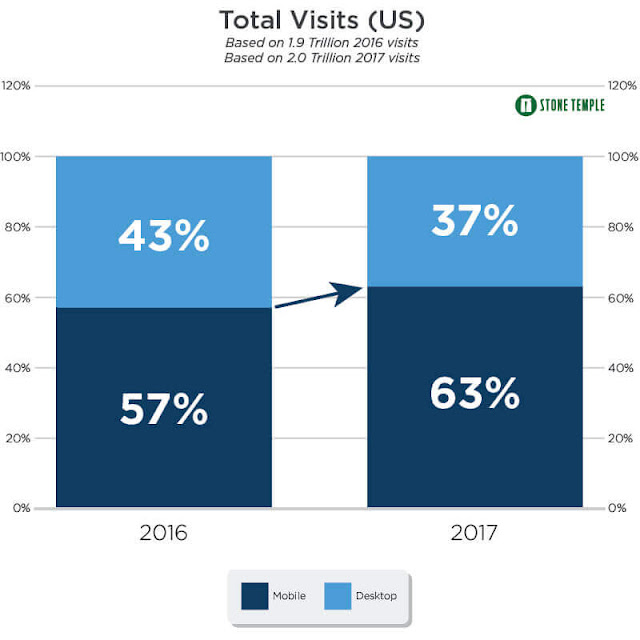
(Source)
This is just US-based data. But even in the global scenario, the trends are similar.
The latest data per Statista suggests that 52.2 percent of all worldwide online traffic was generated through mobile phones in 2018.
Check your analytics and you might notice that mobile users are the biggest source of your website traffic.
After all, there’s a reason why Google rolled out its mobile-first indexing and BERT update.
So, make sure the content on your website is suitable and easy to consume for mobile users.
One of the very common mistakes many make is paying less heed to the fonts (style and size). For instance, you cannot use the same font size for small, handheld devices on smaller devices that you use for the desktop version.
Recommended Read: Fix your font
Similarly, popping-red might look bold on large screens. But it might look obnoxious on mobile.
In addition, continuing with the point #7 above, you must also format the content according to the convenience of mobile users. Again, long sentences and paragraphs are never good here.
9. Make it load faster
You know it already: having a fast loading website is no less than essential today.
53 percent of mobile visitors will leave a page if it takes longer than 3 seconds to load.
In fact, 47 percent of customers expect a webpage to load in 2 seconds or less.
To that, one second delay in the loading speed can lead up to 11 percent loss of page views and a 7 percent reduction in conversions.
If your page loads slowly, people would hit the “back” button even before the content loads, measuring your dwell time to the lowest.
In short, make your website as fast as possible.
Delete all the clutters and additional features. Get rid of plugins/widgets that you never use.
Make it very lightweight.
If you use WordPress, here’s a cool video by AllThingsBlogging that explains how you speed up WordPress with 3 simple tweaks:
10. Engage your audience like a true blogger
There’s a BIG difference between a writer and a blogger.
The latter primarily focuses on engaging the readers and delivering them greater value for the time by solving their distinct problem or confusion.
And that’s what you need to do.
You need to be a blogger.
You need to engage your audience with conversational content.
You need to provide readers with a solution to their problems.
When a person is getting what he wants – and getting that in a rather friendly manner at that – he is more likely to spend time on your website for longer.
So, don’t be a writer who monotonously informs and preaches.
Be a blogger who converses like a friend — be someone who’s more centric to the needs of the audience rather than your own ability of writing.
Also Read: Do you need to have a strong writing skill for blogging?
11. Optimize with more and wider keywords
Here’s what I said in point #1: “Avoid stuffing inapt keywords just for the sake to rank higher or get more traffic. It may end up doing more harm to you.”
Again, what I mean is, say, if you have written an article on ‘weight loss with proper diet’, refrain from targeting keywords that are correlated to workout.
It may increase your organic traffic. But since the content is irrelevant to the intent of the searcher, she/he would leave your page.
Hence, you will have less dwell time, which will eventually affect your website in the long run.
Stick to keywords that are relevant to your diet-based weight loss article.
Now, coming to the next part…
If your primary keyword is something like “fast weight loss diet”, it will definitely have many variations to it. A quick search on KeywordTool.io comes back with over 160 suggests that are near variants to your primary keyword:
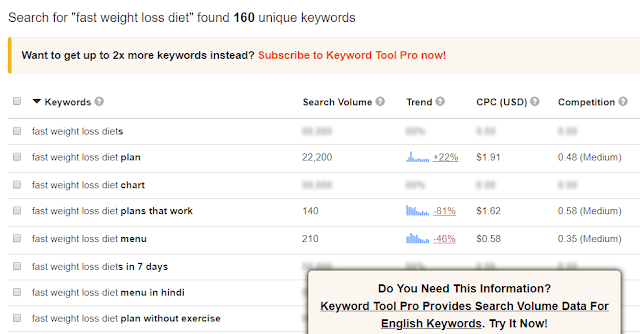
Optimize your content with all these variants.
In addition, also include LSI keywords.
Recommended Read: How to use LSI keywords to boost your SEO to know more about it.
Including diverse versions of your primary (long-tail) keyword is very important today given 96.54 of all search queries in the USA have less than 50 searches per month.
This will increase your organic traffic. And when there’s good highly-targeted incoming organic traffic, there definitely will be an increase in dwell time.
12. Leverage the comment section
Okay, I have no hard data to prove this. So, this is opinionated: many visitors like reading comments after they are finished with the article.
Intuitively, don’t you agree? Have you not read the comments after you have read a rather interesting article?
I sure have. After reading a valuable and insightful article, I usually continue reading the comments to understand different perspectives and opinions.
And I believe many do the same. At least, when the article is analytical and detail-oriented, in which case readers usually find the comment section very rewarding.
In context to dwell time, your comment section can be of great help.
If your article is valuable and has many comments below, your website visitors might spend the time to even consume those comments. And this would, eventually, send positive UX signals to the search engines.
So, make sure you have a good commenting system installed on your website. And that you’re encouraging people to leave comments.
13. Provide them with a good call to action
Let me repeat what I said in point #3…
“When you’re focusing on improving the UX signals of your website, you would rather have the visitors lurk around on your own website than hitting the back button on SERP. Meaning, you would rather have higher ‘time spent on page’ because visitors hang around on your website THAN dwell time where they have to go back to the result page.”
This same theory is applicable even at this point.
You give your visitors a definite call to action, which improves your ‘time spent on page’— and maybe even boosts your conversion.
And this directly signals search engines that visitors are satisfied with their experience on your website.
So, include good and relevant CTA at the end of the contents, which could be for anything — purchase a product, download an eBook or read something else.
Recommended Read: 9 Actionable Tips to Create Call-To-Action That Converts big
Conclusion
These are 13 simple (or not-so-simple) tips on how you can increase the dwell time of your website.
This will enhance users’ experience, which will go on to boost your organic metrics, like website ranking on Google and Bing, and more traffic.
Now you know, champion SEO in 2020 Start today and make necessary changes in your strategy and website.

